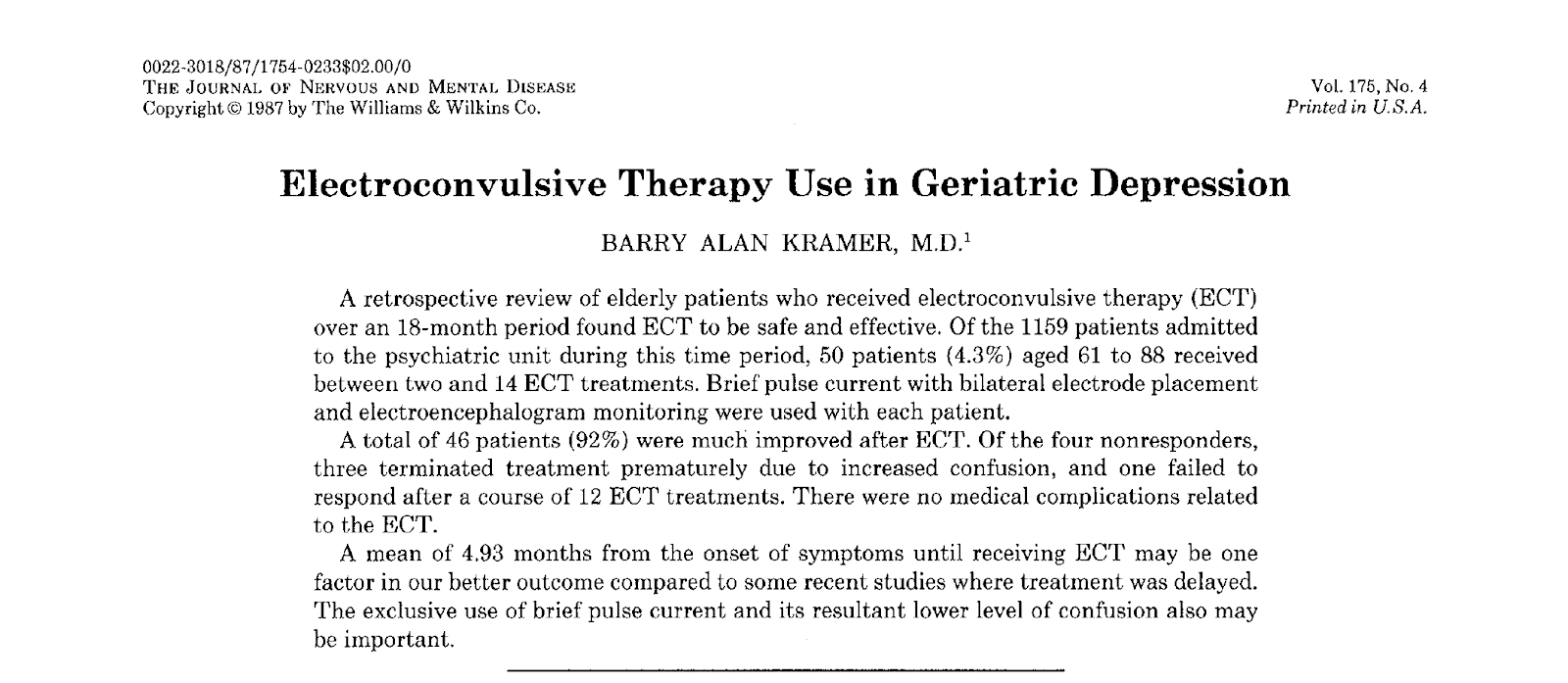"Classics in ECT" brings you this paper from 1987:
Electroconvulsive therapy use in geriatric depression.
Kramer BA.J Nerv Ment Dis. 1987 Apr;175(4):233-5. doi: 10.1097/00005053-198704000-00008.PMID: 3559535
The abstract is copied below:
A retrospective review of elderly patients who received electroconvulsive therapy (ECT) over an 18-month period found ECT to be safe and effective. Of the 1159 patients admitted to the psychiatric unit during this time period, 50 patients (4.3%) aged 61 to 88 received between two and 14 ECT treatments. Brief pulse current with bilateral electrode placement and electroencephalogram monitoring were used with each patient. A total of 46 patients (92%) were much improved after ECT. Of the four nonresponders, three terminated treatment prematurely due to increased confusion, and one failed to respond after a course of 12 ECT treatments. There were no medical complications related to the ECT. A mean of 4.93 months from the onset of symptoms until receiving ECT may be one factor in our better outcome compared to some recent studies where treatment was delayed. The exclusive use of brief pulse current and its resultant lower level of confusion also may be important.
The article is copied below:
This text is very salient:
This is an excellent review of ECT for geriatric patients. It presents a case series of 50 patients in a southern California hospital in the mid-1980s. Dr. Kramer quotes Gaspar and Samarasinghe, "The practice of psychogeriatrics will be very difficult without ECT."
The discussion in this article is excellent, and covers many issues that are still relevant, including electrode placement, stimulus waveform and adequate length of treatment course.
I recommend a full read of this review, ~15 minutes.







Comments
Post a Comment